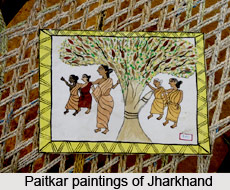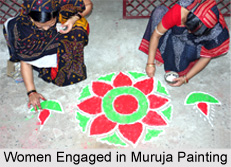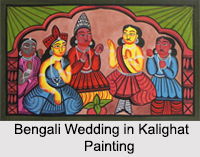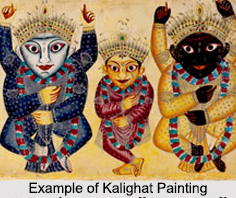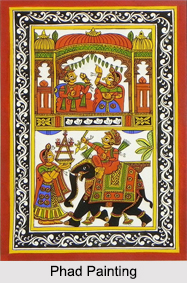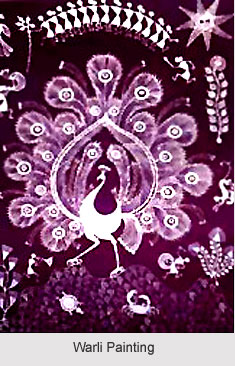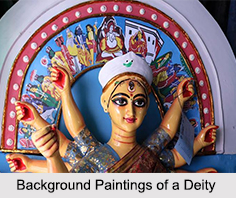 Keeping in mind the traditional style of the ancient times, when the folk art in West Bengal comprised a major portion of its indigenous culture and heritage, the background painting of a deity was a huge hit. Currently, the concept of background painting of a deity still holds prominence and is mainly displayed behind the idol of Goddess Durga.
Keeping in mind the traditional style of the ancient times, when the folk art in West Bengal comprised a major portion of its indigenous culture and heritage, the background painting of a deity was a huge hit. Currently, the concept of background painting of a deity still holds prominence and is mainly displayed behind the idol of Goddess Durga.
Themes of Background Painting of a Deity
Since the background paintings are generally mounted behind the idol of Goddess Durga, the themes surrounding these paintings are also related to the Hindu Goddess. Some of the recurring themes of these background paintings are depicting the life of Lord Shiva and Goddess Durga on Mount Kailasha along with their subjects or disciples- Nandi and Bhringi. Other themes include the 10 incarnations of Lord Vishnu, Goddess Durga as Mahishasura Mardini and fighting the demon king Mahishasura, etc.
It is said in the carpenter"s community of Hatserandi in the Birbhum District, there is a rare collection of background paintings on clay coated cloth and the devotees offer their prayers to these paintings instead of the idol of Goddess Durga. A separate platform is made for placing the painting of Durga and a semicircular painting is affixed on its upper part to serve as a background. The main themes in this semicircular painting in the background are the figures of Lord Rama, Sita, Lord Brahma, Lord Vishnu, the demons Shumbha- Nishumbho etc.
Description of Background Painting of a Deity
Built on a semi circular framework of bamboo, the background painting is done by first coating a layer of clay on a thick piece of cloth and stretching the cloth tightly on the structure. And then the extended portions of the cloth are folded behind the frame and tied up securely. After that, once the clay coated cloth is dried up, a base for the painting is made by applying a paste of lime dissolved in water.
Finally, after the initial stages of preparation is over, the artists paint on the stretched cloth with vivid, vibrant colours that are reminiscent of the various motifs of the upper parts of stone idols, which used to be displayed in ancient days. Adopted from the traditional style of painting in Bengal, these background paintings used an array of rich warm colours like blue, red, green, green, black and chocolate.
Later on, to make the task of background painting easier, the artists started to separately illustrate on a different semi circular piece of paper which was then pasted to the already structured bamboo framework behind the idol. Examples of these kinds of pasted background paintings can be seen among the collections in the Ashustosh Museum and Gurusaday Dutt Museum.
